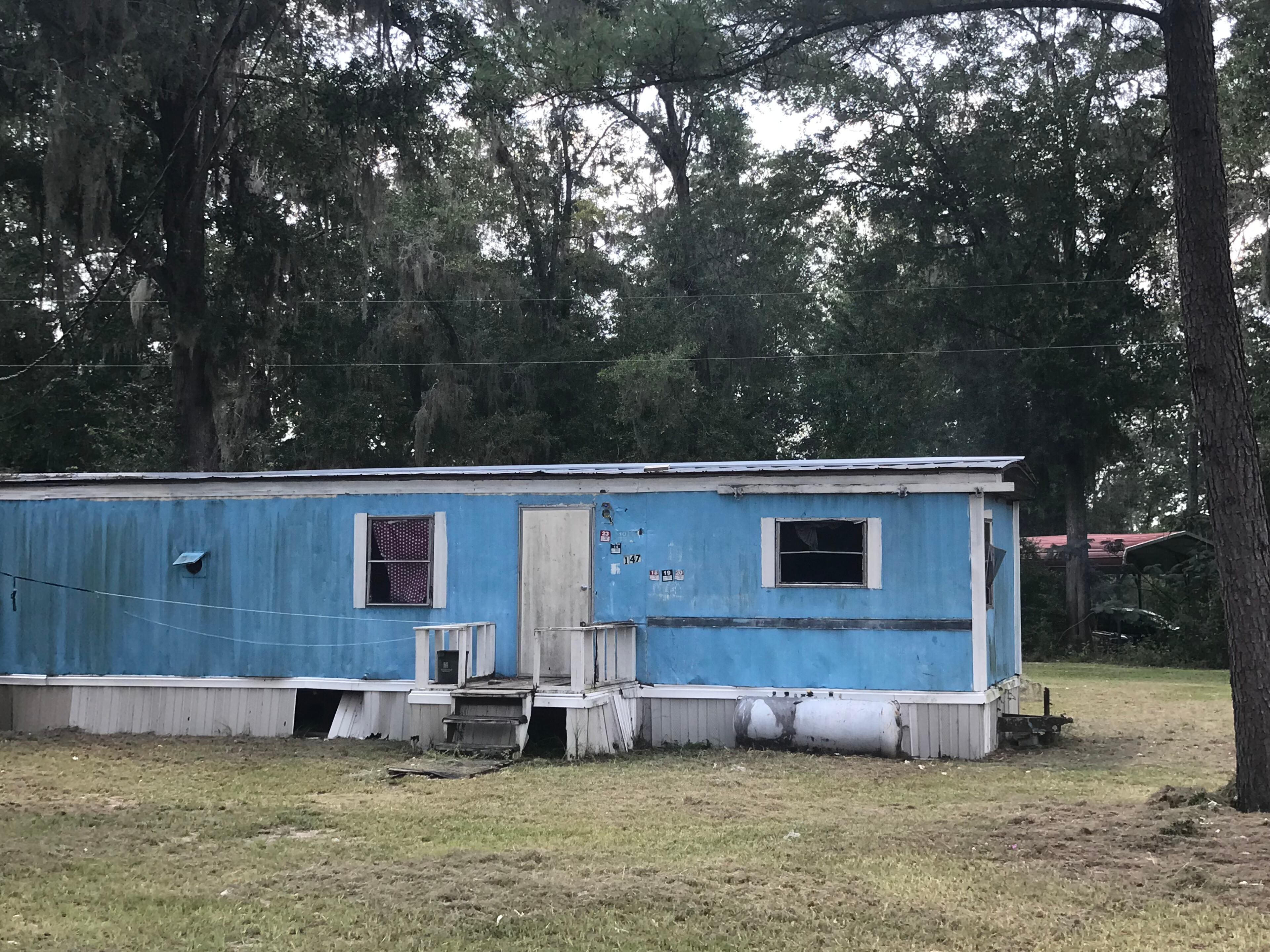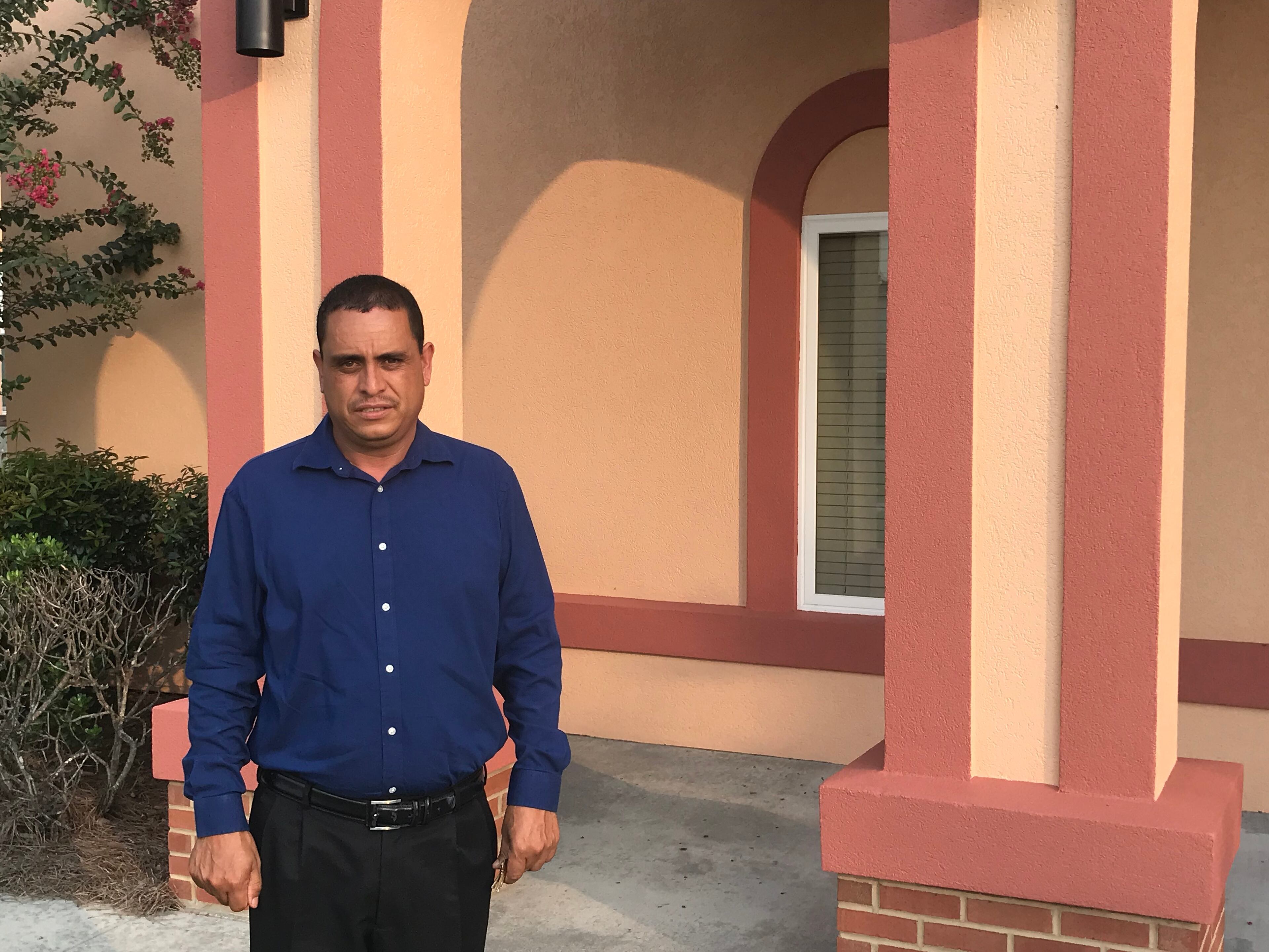‘They all went away:’ Why some foreign farmworkers end up leaving the fields
Not including the chickens that stroll through the front yard, the sole inhabitant of a trailer home in Statenville, Ga. — population fewer than 1,000 — is a teenager from San Luis Potosí in central Mexico.
A look inside reveals half a dozen bunk beds with thin foam mattresses, typical of the accommodations that employers provide migrant farmworkers in this rural stretch of South Georgia, just a handful of miles removed from the Florida border. Back in May, when he arrived in the state on a temporary agricultural work visa, the teenager shared the Statenville home his employer provided with nine other foreign guest workers. Another group settled down the street in a worn-down, blue-painted shack. By mid-August, all the other workers were gone.
Farmworker advocates say stories like this are common: After traveling to the U.S. at significant personal expense for work on farms, migrants often don’t wind up receiving as many hours – and paychecks – as they were promised. A disconnect between the contractors who bring in the workers and the farmers who use them contributes to the problem.
To realize the economic gains that motivated their trips north, many migrant workers wind up leaving the farms where they were sent and instead unlawfully pursue other jobs — in construction, food service or other fields.

“They all went away. Why? Because there’s no work here. Not because they wanted to,” said the teen of his former colleagues and roommates. The Atlanta Journal-Constitution agreed to speak to him and several H-2A workers on condition of anonymity because they feared retaliation or deportation for sharing their stories.
It is unclear whether those guest workers who leave their farm jobs then return home as they were originally meant to do when their work visas expire.
Industry representatives say migrant farmworkers may have to occasionally contend with light work schedules because of the vagaries of agriculture. This year, severe temperature swings, torrential rain and hail storms devastated key Georgia crops, including peaches, blueberries and cotton.
But a poor harvest may not be solely to blame for the problem, advocates say. They claim the number of idle workers is likely connected to a change in the way agricultural guest workers are brought to the United States: A growing share of foreign workers are being employed not by individual farmers, but by farm labor contractors, according to a report by the U.S. Department of Agriculture.
The change means contractors hire the migrant farmworkers and then lease their services to different farmers. While it’s legal, the drawback is that contractors may not always have up-to-date information to know when or where workers are needed on farms.
In addition, although H-2A program rules forbid employers from charging workers recruitment fees, farmworker advocates say that practice has become widespread among farm labor contractors and their associates abroad. That means contractors could have a financial incentive to bring in more foreign workers than are actually needed on local farms.
Alejandro, a Mexican national, arrived in South Georgia to work as a farmworker through the H-2A program in March 2022. He only lasted three months on the job because work hours were limited, and his weekly pay hardly rose above $250.
“They didn’t give us the 40 hours [of work per week] that had been promised,” he said. “The only thing we want to do is to work.”
After managing to retrieve his passport – which had been taken by his employer on his first day in Georgia – Alejandro left the compound he was being housed in alongside other H-2A workers and made it to a nearby bus station. He said he first went to Tallahassee, Fla. and is now living and working in Houston, Texas.
Because he broke the terms of his agricultural visa and stayed in the country past its expiration date, Alejandro now lacks legal status. He asked the AJC to withhold his last name because he fears deportation.
“When you leave [the farm], you lose everything,” he said.
‘It has all become corrupted’
Carlos Ceja is the pastor of one of Valdosta’s largest Hispanic churches, called Manantial de Vida, which leads outreach efforts targeting Latin American farmworkers. A South Georgia resident since the 1990s, he has seen firsthand the explosive growth of the H-2A program in the region. His own parents worked in the fields when the family first settled in the state.
According to Ceja, the H-2A program previously served as a reliable provider of economic opportunity for low-income people in Latin America, all while addressing local shortages of farm labor. Now, in his view, it has mostly turned into what he describes as a corrupt business for labor brokers.

“It has all become corrupted,” he said.
“If a farmer needs 200 workers, the contractor might bring in 300 because he earns more that way,” he said. Ceja described how workers pay a lot of money in their home countries to be chosen to come to the U.S. under the work visa program. “They come with a lot of need because they already owe money. So they are under a lot of pressure.”
When there is not enough work to go around, Ceja said, migrants “are unsatisfied, and they are driven to stay here illegally to try to make some money and recoup some of the costs they had.”
Alma Young works with H-2A workers in South Georgia through her role as coordinator with the United Farm Workers Foundation. Her first job in the state was in the fields, where she used to pick Vidalia onions.
According to Young, instances of workers being charged illegal recruitment fees to come work in Georgia only to be given insufficient work hours are “very, very common. … We hear that a lot.”
She said $1,000 tends to be the low-end for these fees. Ceja has heard of workers being charged upward of $5,000.
Young said there’s no repercussions for labor contractors who request too many farmworkers. Even if workers wound up being unneeded, the contractor has already collected a “recruitment fee” and made their money.
“They can do whatever they want,” she said.
To pay the steep fees, workers usually resort to taking out predatory loans, according to experts with the Georgia Legal Services Program. Failure to repay creditors could mean workers lose their homes back in Mexico.
“It can get pretty dire for workers,” said Abigail Kerfoot, staff attorney with the Centro de los Derechos del Migrante (CDM), a migrant workers organization that operates in Mexico and the U.S. “We get workers with real food insecurity. You know, workers starving because they have been brought to the United States to work on a particular farm … and yet there’s no work.”
In Statenville, the teenager from San Luis Potosí explained that his former roommates scattered across the U.S. to find other work because they are older and have families to support back in Mexico. He said he prefers to stay put and wait for work to pick up. The thought of committing an immigration violation by leaving also worries him.
From his arrival in Georgia in May through late August, the teenager said he made a total of $2,000. He had previously incurred over $1,000 in travel costs, first within Mexico to pick up his visa at a U.S. consulate, and then to come to Georgia. He said the contractor who employs him did not reimburse those expenses, as required by H-2A program rules.
The teenager’s goal of saving enough money to one day buy a plot of land back in Mexico seems increasingly out of reach.

Safeguards unlikely to be implemented
The H-2A program has grown at a furious pace in Georgia in recent years, making the state one of the top users of migrant guest workers in the nation. In 2012, there were 5,852 certified H-2A positions in Georgia, compared with nearly 35,000 ten years later, according to data from the federal Office of Foreign Labor Certification.
Stories like Alejandro’s would seem to raise questions about the accuracy of Georgia’s official H-2A population statistics.
But Chris Butts, executive director of the Georgia Fruit and Vegetable Growers Association, says those types of cases “would be very much the exception. … (Employers) are always looking for more workers. We’ve got more to do than we have people and hours in the day to get it done.”
He noted unforeseen disruptions to work schedules can come into play because the process to request H-2A workers is lengthy, and must be started months before work is set to begin, leaving plenty of time for unforeseen weather events to impact harvests.
There are safeguards within the H-2A program that should prevent workers from taking a big financial hit if they aren’t able to work the planned number of hours. A rule known as the three-fourths guarantee says employers must offer at least 75% of the total hours that were promised in workers’ contracts. If that threshold isn’t met, employers must still pay workers the amount they would have earned had they been able to work those hours.
“Finding out that there’s no work or not enough work is a big disappointment [for workers] and it is a cost that somebody has to bear. In the case of [H-2A] visas, the law is very clear. It’s the employer who has to bear that cost if they’re not giving as much work as expected,” Kerfoot said.
Although the visa holders work on farmers’ property, they are officially employees of the labor contractors, if that’s who brought them to the U.S. When farmers work with H-2A contractors to fill their labor needs, the farmers aren’t responsible for housing, transporting or paying workers as required by the H-2A program. Contractors are.
“Contractors go pick up workers where they’re living and they take them to work. Farmers don’t have to worry about anything,” said Daniel Baca, a farm labor contractor in southeast Georgia.
Ceja said the three-fourths guarantee “doesn’t exist in practice.” Young described it as “a rule on paper that hardly gets enforced” because enforcement in the H-2A program is primarily a complaint-driven process, and workers are often scared to speak up.
“When some workers do reach out and complain, [employers] are able to figure out who that was and they’re gone the next day. … If it gets bad enough, then they will stop recruiting from the community [workers are from], period. So, then you are responsible for your entire community in Mexico.”
Baca said that if the number of work hours turn out to be fewer than what was promised to workers, weather events are to blame. When asked what action he takes in situations like those, Baca said he sends workers back to Mexico.
‘We’re here sleeping’
Workers may not even know a resource like the three-fourths guarantee exists.
That was the case for two H-2A workers who share another farmworker housing unit in Statenville. In mid-August, the men said they had last worked over two weeks ago, and that they were told not to expect any work for at least a month.
The men said the contractor who had brought them over fell out of favor with the farmer whose fields they were working on. The AJC is not naming the men because they fear retribution from the contractor.
Now, another contractor’s crew “is working there every day, while we’re here sleeping.”
The pair considered leaving to try their luck elsewhere, but getting around is an issue. H-2A workers don’t have their own means of transportation. In South Georgia, their employers take them to work or to shop for groceries in yellow school buses.
“I think we could find work in Valdosta or in other places, but the problem is that we have no way of getting there,” one of the men said.


